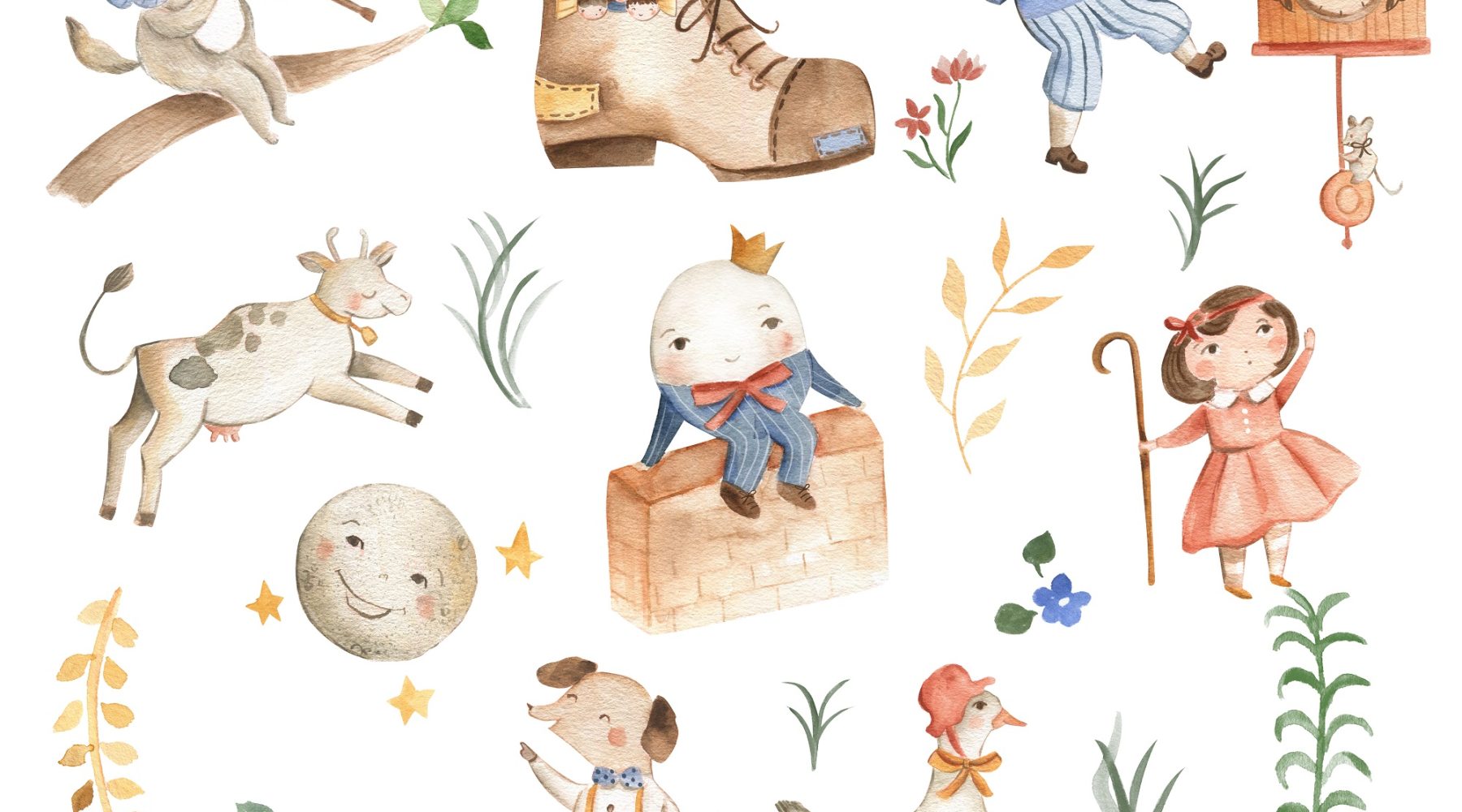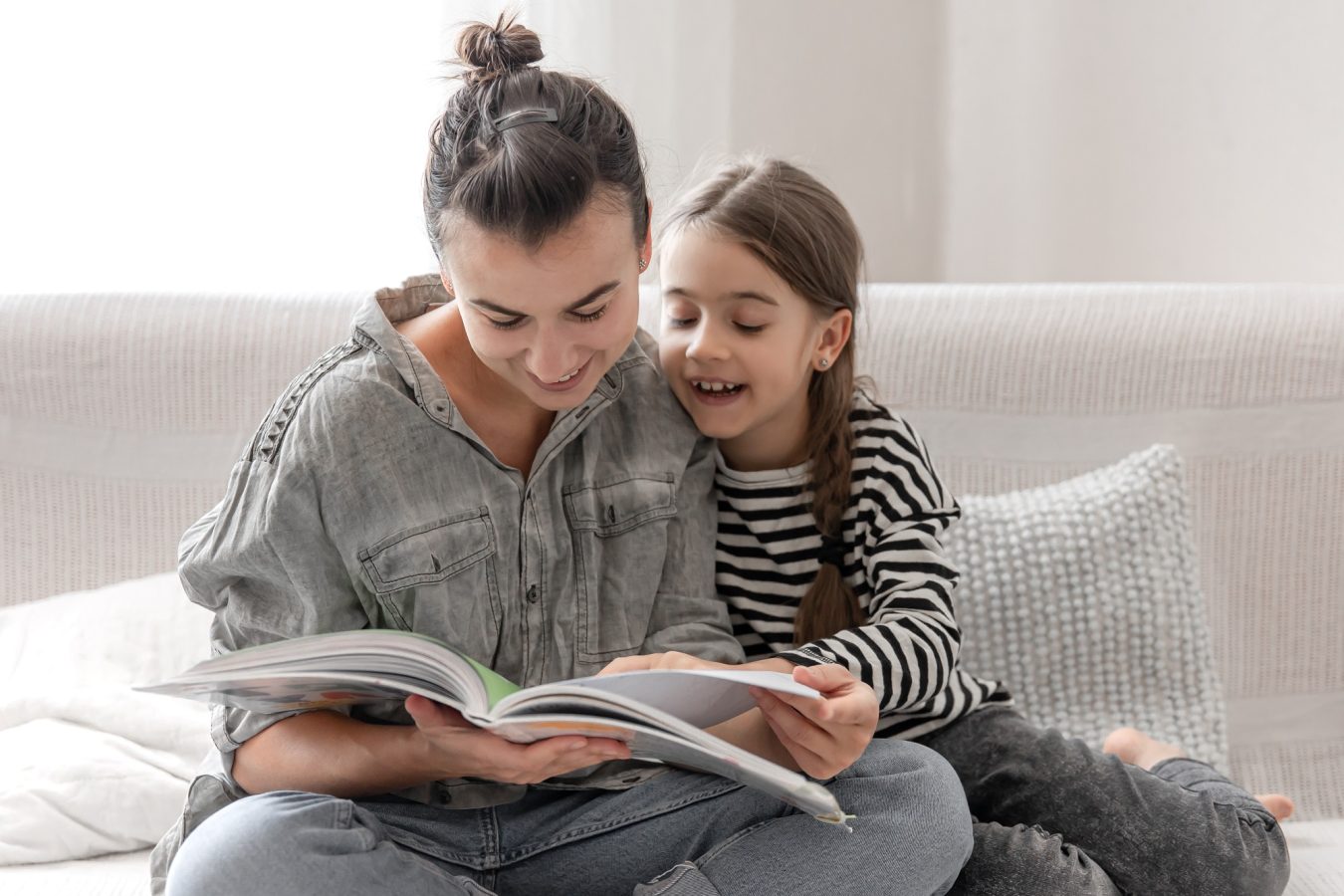
If you think nursery rhymes are old fashioned, think again, writes Diane Bourke. She explains how they can help launch a child's development.
As the ISV Poetry Competition returns in 2023 my thoughts return to the power of nursery rhymes, sadly often neglected, and considered old fashioned in the 21st century. If this is your view, hopefully this article will prompt you to reconsider.
Nursery rhymes are a child’s first insights into poetry, often listening to the rhythm and rhyme of these short verses, while settled contentedly on a loved one’s lap. Such experiences are likely to be among a child’s first memory and should not be overlooked. Besides, the magic need not stop here.
What makes a nursery rhyme?
A nursery rhyme is usually defined as a traditional poem or song for children. The oral tradition of nursery rhymes is ancient but new rhymes have progressively entered the flow. Julia Donaldson’s recent ‘Noisy Garden’ extract, ‘And snapdragons roared and catmint miaowed’ summons up a cacophony of deafening animal sounds.
A French poem numbering the days of the month, similar to ‘Thirty Days hath September’ was recorded in the 13th century. ‘Twinkle, Twinkle Little Star’ by Ann and Jane Taylor was published in 1806. According to Allie Esiri some literary historians consider the Taylor sisters to have been the first English authors to write exclusively for children. ‘Mary Had a Little Lamb’ written by the poet and teacher Sarah Josepha Hale was published in 1830 and inspired by a real event. The opening stanza was the first ever recording made on Thomas Edison’s new phonograph machine in 1877.
Yes, all these nonsensical verses really matter so let us look more closely at why this is so. First, they matter because they rhyme, a particularly important part of the reading process. Phonological awareness (and its subset phonemic awareness) are aural and oral skills that allow children to understand that speech is made up of words, and that words are made up of distinct sounds and sound patterns, an essential step in learning to read. Rhyme and rhythm which abound in nursery rhymes help children develop an ear for our language, a precursor to learning to read.
It is the repetitious nature of the nursery rhymes that allows children to memorise basic structures and patterns in the English language. As they come to anticipate the rhyming word, they will make predictions, an important skill in learning to read. Furthermore, when children go on to memorise the entire nursery rhyme, they are undertaking a mini boot camp for their ever-growing brains.
Listening comprehension precedes reading comprehension and for children to understand what they are reading they must be able to hear the language first. Mem Fox reminds us that ‘once children have masses of rhythmic gems in their heads, they will have a huge store of information to bring to the task of learning to read, a nice fat bank of language, words, phrases, and grammar. The words in their heads then begin to drift into their daily speech and all at once we have an articulate child.’

Firing imaginations and bringing joy
Nursery rhymes open young children up to a world of imaginative characters, settings, and storylines, expand their imaginations and invite them to be playful with vocabulary. It’s hard not to be joyful when uttering diddle, diddle dumpling.
Comical nursery rhymes allow children to develop a sense of humour. Think of ‘Hey Diddle Diddle’, a brilliant example of nonsense. L Frank Baum, author of ‘The Wizard of Oz’ series, took some of the fun away when he wrote Hey Diddle Diddle from a little boy’s perspective, where the cow jumps over a reflection of the moon in the water. This take on the rhyme could create further discussion about the probability of a cow jumping over the moon.
Nursery rhymes are the perfect first stories for young children as they normally tell a story with a beginning, middle and an end. This teaches children that events happen in a sequence, making it easier to understand a storyline as they follow along. ‘There was a Crooked Man’ is a fine example here.
Young children are also learning new vocabulary and how to articulate words, modulate their voices and enunciate clearly. Lots of new vocabulary can be found in the rhymes. Dainty is found in ‘Sing a Song of Sixpence’, lingered and patiently in ‘Mary had a Little Lamb’ while in ‘The Queen of Hearts’ popularised by Lewis Carroll in ‘Alice’s Adventure in Wonderland’ we find knave and vowed.
Simultaneously, children are also practicing pitch, volume, and voice inflection while experiencing the rhythm of language in nursery rhymes. It is important to add in actions and facial expressions to highlight the fun when sharing nursery rhymes with children. ‘If You’re Happy and you Know It’ would be a suitable place to start. Tongue twisters add further complexity here. Think of ‘She Sells Seashells’ widely claimed to be about the fossil collector Mary Anning.
Nursery rhymes can help children identify their own emotions or the emotions of others. Nursery rhyme characters experience many different emotions. Chat openly about these. Think of the very frightened Miss Muffet, Jack and Jill tumbling down the hill, or Doctor Foster who nearly drowned in Gloucester. There are also a multitude of rhymes expressing fun and joy. The tickling game ‘Round and Round the Garden’ always ends in squeals of delight.
How to enter the Student Poetry CompetitionLessons about the world around them
Nursery rhymes have an enormous potential in instructing young children about the world around them be it the weather, nature, food, colour, or animals. On and on the topics go. Others teach about maths or the alphabet. The topics are vast and varied.
‘One, Two, Three’ helps children learn to count while the rhyme ‘Ten in the Bed’ is a wonderful way to teach subtraction. A real mathematics quandary could develop if the listener is not careful in ‘As I was Going to St Ives’.
‘The Alphabet Song’ sung to the same tune as ‘Twinkle, Twinkle Little Star’, published in the early nineteenth century, was an incentive for my grandson to learn the alphabet, ending in elation when the challenge was achieved.
Lastly, we must not forget our own Australian nursery rhyme ‘Kookaburra Sits in The Old Gum Tree’ written by Melbourne teacher Marion Sinclair for a Girl Guides jamboree in 1934.
Nursery rhymes enhance physical development, co-ordination, and balance because of the physical nature inherent in some rhymes. ‘I’m a Little Teapot’ and ‘Incy Wincy Spider’ are winners here. And we cannot ignore the simple arm and hand movements that help children develop their motor skills and hand-eye coordination as they accompany the lyrics of ‘Baby Shark doo doo doo doo doo doo’.
It is thought ‘Baby Shark’ originated as a campfire song or chant, potentially created by camp counsellors in the 20th century, and inspired by the movie Jaws. At one stage ‘Baby Shark’ snatched the title of YouTube’s most watched video of all time.
According to Beatriz Ilari, associate professor at the University of Southern California, the tune’s repetitive lyrics and fast tempo trigger the pleasure centre in a child’s brain, increasing dopamine which leads to an intense feeling of pleasure. This also works for adults.
Furthermore, according to Valorie Salimpoor, a neuroscientific consultant, the words in ‘Baby Shark’, like baby, daddy, mummy, grandpa, grandma, help children create a connection or a bond with the music. The thought of these people, with whom children are likely to have an incredibly positive connection, provide a pathway to target the emotion and reward systems in the brain.
If sharing rhymes with children is part of your routine, give yourself a huge pat on the back. If it has not been particularly common for you, head off to the library and borrow a book of these gems. I recommend Allie Esiri’s recently released ‘A Nursery Rhyme for Every Night of the Year’. You and your children will not look back and, just like the fine lady on her way to Banbury Cross, adorned with rings on her fingers and bells on her toes, you will have music wherever you go.
Our list of nursery rhymes
Here are the nursery rhymes highlighted in this article:
- Noisy Garden
- Thirty Days hath September
- Twinkle Little Star
- Mary had a Little Lamb
- Diddle Diddle Dumpling
- There was a Crooked Man
- Sing a Song of Sixpence
- The Queen of Hearts
- If you are Happy and you Know it
- She Sells Seashells
- Little Miss Muffet
- Jack and Jill Went Up the Hill
- Doctor Foster went to Gloucester
- Round and Round the Garden
- Kookaburra Sits in The Old Gum Tree
- One, Two, Three, Mother Caught a Flea
- Ten in the Bed
- As I was Going to St Ives
- The Alphabet Song
- I’m a Little Tea Pot
- Incy Wincy Spider
- Baby Shark
- Ride a Cock-Horse to Banbury Cross
About Diane Bourke
Diane Bourke is a Project Manager for Independent Schools Victoria. She was Head of Junior School, Campbell House, at The Geelong College for 16 years, and Head of Junior School, Morris Hall, Melbourne Girls Grammar for 15 years.


